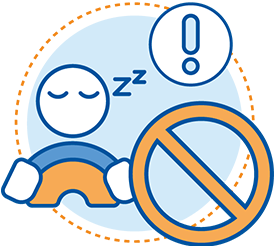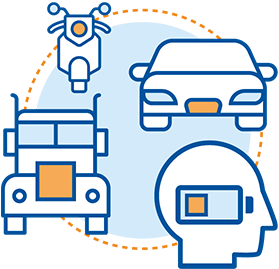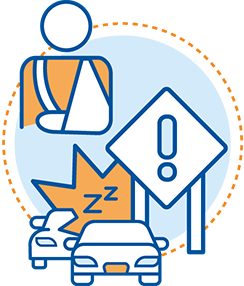How Fatigue Affects Driver Safety
Driving requires constant focus, quick reflexes, and clear judgment—yet fatigue silently undermines all three. While the dangers of drunk and distracted driving are widely recognized, drowsy driving remains an often-overlooked risk.
This National Sleep Awareness Week, created by the National Sleep Foundation (NSF), highlights the critical role of sleep in public health and safety. Since 1990, the NSF has been dedicated to advancing sleep science, improving sleep health education, and raising awareness of the risks associated with sleep deprivation.
In 1998, the NSF launched Sleep Awareness Week as an annual campaign to educate the public on the importance of sleep. Timed around the start of Daylight Saving Time, it serves as a reminder of how even minor disruptions to sleep can have a significant impact on daily life—including driving safety.
Over the years, this campaign has played a key role in expanding public awareness of sleep’s impact on cognitive function, reaction time, and decision-making, reinforcing that well-rested drivers are safer drivers.
The Scope of the Problem

Drowsy driving isn’t just about feeling tired—it’s about impaired cognitive function, slowed reaction times, and increased crash risk. Recent data highlights just how common—and dangerous—this issue is:
- Approximately 1 in 25 adult drivers report having fallen asleep while driving in the past 30 days.
- Drowsy driving is a factor in approximately 21% of fatal crashes.
- Fatigue-related crashes cost society an estimated $109 billion annually, excluding property damage.
Despite these staggering numbers, many drivers still push through exhaustion, unaware of how severely fatigue impacts their ability to drive safely.
Why New Drivers Face the Highest Risk
Drowsy driving affects all drivers, but teens and new drivers are particularly vulnerable.

- 95% of teens acknowledge drowsy driving is risky, yet many perceive drunk, drugged, and distracted driving as more dangerous.
- Inexperience behind the wheel makes it even harder to compensate for fatigue, as new drivers already have slower reaction times and weaker decision-making skills.
- Teen drivers often juggle school, work, and social commitments, leading to chronic sleep deprivation
With limited experience and reduced sleep, new drivers are more susceptible to the effects of drowsiness—and less equipped to handle it safely.
The Role of Speed Management in Preventing Drowsy Driving Crashes
While there is no substitute for proper rest, certain traffic safety measures can help reduce the risks associated with drowsy driving.

- Speed Awareness Keeps Drivers Engaged – Seeing real-time speed feedback helps drivers refocus their attention, preventing them from slipping into “autopilot” mode.
- Safe Speeds in High-Risk Areas – School zones, residential neighborhoods, and rural roads are high-risk zones for fatigue-related crashes. Reinforcing speed limits in these areas ensures drivers are more aware.
- Lower Speeds Provide More Time to React – Fatigued drivers need longer to process information and respond to sudden obstacles. Maintaining lower speeds buys critical reaction time, reducing the likelihood of severe crashes.
Speed control alone won’t eliminate drowsy driving, but it plays a crucial role in reducing the dangers associated with fatigue-related impairment.
So, How Can I Prevent Drowsy Driving
The best way to prevent drowsy driving crashes? Stay proactive.
✔ Prioritize sleep before getting behind the wheel. Adults should aim for 7–9 hours per night, while teens need at least 8–10 hours.
✔ Recognize the warning signs of fatigue. Frequent yawning, drifting out of your lane, and trouble focusing are signs that you should pull over.
✔ Take regular breaks on long trips. Experts recommend stopping every two hours or 100 miles to stretch, rest, or switch drivers.
✔ Avoid driving during peak drowsiness hours. Most fatigue-related crashes occur between midnight and 6 AM, when the body naturally craves sleep.
Drowsy driving is a serious but preventable risk. Raising awareness, prioritizing rest, and reinforcing safe driving habits are the keys to reducing fatigue-related crashes.
